|
by Joan Peterson, publisher and co-author of Eat Smart in India: How to Decipher the Menu, Know the Market Foods, & Embark on a Tasting Adventure 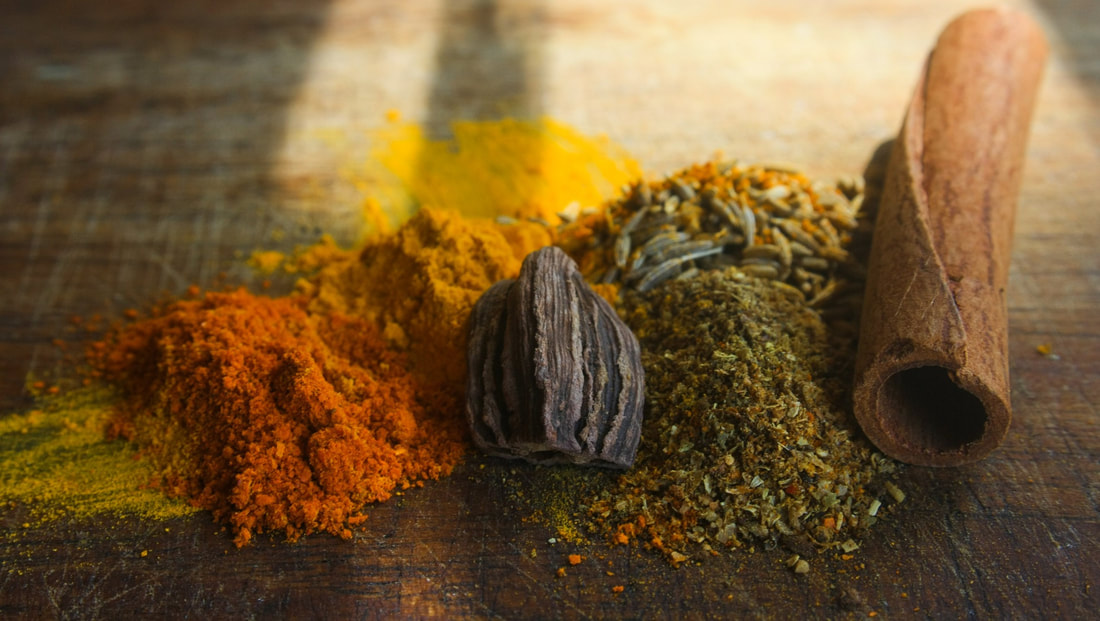 Spices and herbs are the cornerstone of Indian cookery. Traditionally they are freshly ground twice a day in a shallow stone mortar or on a flat basalt stone using a basalt rolling pin. Chefs and home cooks alike are well versed in the individual characteristics of each seasoning. They know which spices enhance the flavors of particular foods, how much of each spice should be added to a dish, and in what order spices should be added in the cooking process so that no spice predominates or tastes “raw.” Artful blending of different seasonings has created the subtle nuances in the characteristic tastes of Indian cuisine. In general, spice mixtures (masalas) are either wet or dry. Wet mixtures are moistened with water, oil, vinegar or coconut milk to make a paste or more liquid mixture, and they cannot be stored. Dry mixtures mainly are powdered. In Indian cooking there is no all-purpose curry powder. This is a commercial mixture created during colonial times by the British, who still use it rather indiscriminately to make “Indian” dishes. To an Indian, a curry (kari) is a sauce, or a dish with sauce. Wet mixtures of fresh spices predominate in southern Indian cooking. Here the main staple is rice, and although it typically is boiled and eaten plain, several flavored sauces accompany the rice to moisten it. In northern Indian cooking, many dishes tend to be cooked without much liquid, and as such are easier to scoop up with pieces of bread as a utensil. Without sauce to cook in, spices are tempered in a small amount of clarified butter or oil to release their aromas before the main ingredients are added to the pan. In some recipes, tempered spices are added at the end of the cooking process.
Indians favor the visual appeal of certain spices. Turmeric gives a bright yellow color to rice and potatoes. The very expensive saffron lends an orange-yellow color besides its incomparable, heady flavor. Mild red chile peppers grown in Kashmir are prized for the rich red color they impart. Another red colorant, an edible extract called mowal, is made by boiling cockscomb flowers. Dried rind of the red mango (kokum) turns food somewhat pinkish-purple. We especially like the refreshing, slightly tart drink (kokum kadi) of fresh coconut milk flavored with this rind. 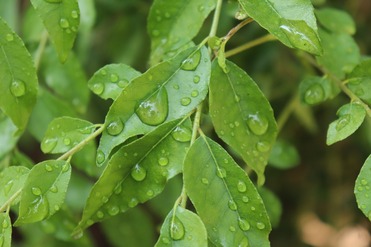 Fresh sprig of fragrant curry leaves. Sizzling the leaves in a little oil accentuates their aroma and slightly bitter taste. This spice provides a signature flavor to southern Indian dishes. Fresh sprig of fragrant curry leaves. Sizzling the leaves in a little oil accentuates their aroma and slightly bitter taste. This spice provides a signature flavor to southern Indian dishes. Among the unusual spices to experience is asafoetida (hing), a strong, sulfur-smelling, milky gum resin. A pinch of powdered resin cooked in hot oil or clarified butter and added to certain dishes enhances the flavor. A trace of the odor component of the resin lasts for a short while in the food. Curry leaves (kari patta) are small, dark-green leaves with a distinct aroma and slightly bitter taste. They are sizzled in a little clarified butter or oil to accentuate their flavor. Fenugreek leaves (kasoori methi) have a unique, slightly bitter flavor. It is an acquired taste, which can be sampled in aloo methi, diced potatoes fried with fresh fenugreek leaves. Bits of dried fenugreek leaves occasionally are added to flatbread dough. Kewra essence is extracted from the flowers of the screwpine and is used in rice- or corn-flour noodles called falooda. These flavored noodles are an ingredient in a drink, which is also called falooda, and they accompany Indian ice cream made with reduced milk. Certain lichens are used as herbs. Kalpasi is a lichen that grows on cinnamon trees and on trees near the seashore during the monsoon. 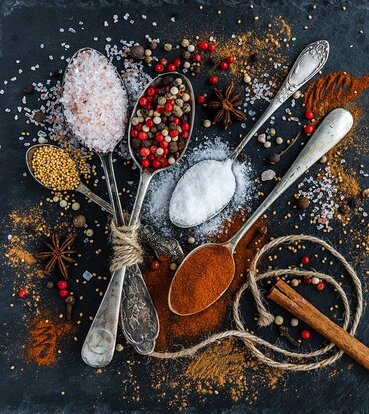 Several kinds of salt are used in Indian dishes. Some are flavored salts mined as crystals from underground dry sea beds. Each imparts a characteristic flavor based on its chemical composition. For example, black mineral salt (kala namak) adds zest to snacks (chaat), fruit salads and vegetables. Its grayish-pink crystals become grayish-brown when ground. Countless outdoor markets exist in India. There will be many opportunities to see all the amazing spices that are used in Indian cookery. 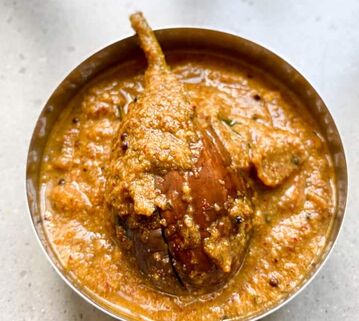 photo: cookingandme.com photo: cookingandme.com Enai Katrikey Aromatic sautéed eggplant. Serves 4. 4 T. vegetable oil 1 1/2 lbs. baby eggplants, each cut into 4 pieces 1 small onion, chopped 1 clove garlic, sliced 1 T. grated fresh ginger 1/2 t. cumin seeds 1 t. black mustard seeds 1/2 t. black peppercorns 1-inch piece cinnamon stick 1/2 c. grated fresh coconut 4 dried, hot red chile peppers 1 T. coriander seeds 1 t. fennel seeds 1 t. star anise 4 whole cashew nuts 1 T. coconut oil 10 curry leaves 1/4 t. turmeric powder 1/2 t. salt 3/4 c. water Heat oil in a frying pan and sauté eggplant until soft. Remove from the pan and set aside. Fry onion, garlic and ginger for 1–2 minutes over high heat, and set aside. In the same pan, dry roast cumin, 1⁄2 teaspoon mustard seeds, peppercorns, cinnamon, coconut, two red chile peppers, coriander, fennel, star anise and cashew nuts until dark brown. Let cool. Grind dry-roasted spices with fried onion, garlic, ginger, and 1⁄4 cup water into a fine paste and set aside. Heat coconut oil in a frying pan over high heat until shimmering. Add 1⁄2 teaspoon mustard seeds, two red chile peppers and curry leaves. Cover the pan and let seeds sputter. When sputtering slows down, remove spices from the pan and set aside. Return partly cooked eggplant to the pan. Add turmeric, salt, spice paste and 1⁄2 cup water. Mix well and cook for 5 minutes over medium heat or until the eggplant is completely cooked. Garnish with fried mustard seeds, red chile peppers and curry leaves.
7 Comments
9/8/2021 06:31:42 am
Indian spices are very helpful to our health, I like Indian Spices.
Reply
2/3/2022 02:47:37 pm
What an exquisite article! Your post is very helpful right now. Thank you for sharing this informative one.
Reply
Leave a Reply. |
AuthorWe write about food and travel. CategoriesArchives
October 2020
|
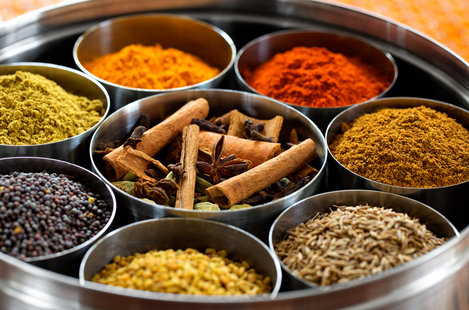
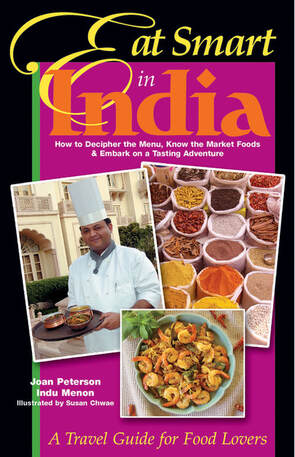
 RSS Feed
RSS Feed